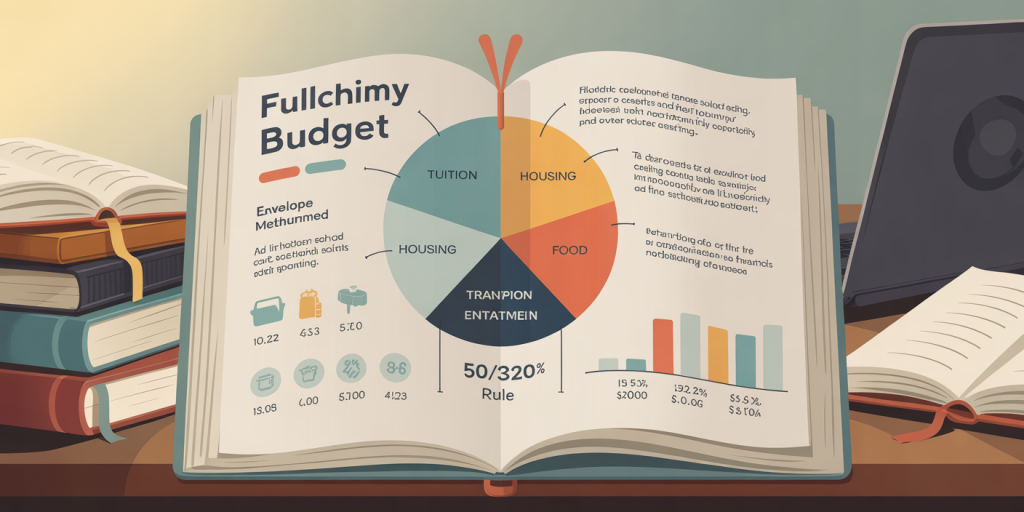Managing finances as a full-time student can be challenging, especially with tuition fees, textbooks, housing, food, and social activities pressing on limited budgets. According to a 2023 study by the National Student Financial Wellness Survey, over 70% of students reported financial stress impacting their academic performance, making effective money-saving strategies crucial. This article explores practical ways students can stretch their dollars without compromising their college experience. By combining smart budgeting techniques, leveraging student discounts, and adopting frugal habits, students can minimize expenses and build a financially secure foundation.

Understanding Student Expenses: Where Does the Money Go?
Before students can effectively save, they need to scrutinize their spending patterns. According to the College Board’s “Trends in College Pricing 2023,” the average annual cost for tuition and fees is approximately $10,940 for in-state public colleges, and $38,070 for private institutions. However, tuition is only one part of the financial picture. Housing, textbooks, transportation, and daily expenses contribute substantially to overall costs.
For example, housing can cost between $5,000 to $12,000 annually depending on location and type—campus dorms tend to be pricier than off-campus shared apartments. Textbooks often add another $1,200 or more annually. These figures highlight the importance of addressing multiple expense categories to achieve meaningful savings.
Creating a detailed monthly budget can reveal spending leaks. For instance, students might uncover that they spend $100 monthly on takeaway coffee or $150 on streaming subscriptions they don’t utilize fully. Identifying such habits is the first step toward cost reduction.
Smart Budgeting Strategies for Students
A disciplined budgeting system is vital for financial health. Students can opt for the 50/30/20 budgeting rule, allocating 50% of income to necessities, 30% to lifestyle wants, and 20% to savings or debt repayment. However, since student budgets are often tight, adjusting these ratios—such as reducing “wants” to 20% and increasing savings to 30%—can accelerate financial security.
Using smartphone budgeting apps like Mint, YNAB (You Need A Budget), or PocketGuard helps track expenses in real time. These apps generate visual reports allowing students to adjust spending readily. For example, one student at the University of Michigan managed to reduce monthly overspending from $600 to $400 by tracking small unnecessary purchases, thus saving over $2,400 annually.
An effective budgeting technique is the envelope method, where cash is divided into envelopes earmarked for categories like food, transportation, and entertainment. Once an envelope is empty, no further funds are spent in that category. This physical money-management approach helps prevent overspending, something digital tools sometimes fail to deter fully.
Leveraging Student Discounts and Offers
One powerful way students can reduce expenses is by maximizing available discounts. Many businesses offer student rates, yet not all students take full advantage. According to the National Retail Federation (NRF), 87% of students feel they aren’t fully aware of all available discounts, indicating a lost opportunity.
Popular platforms like UNiDAYS and Student Beans consolidate numerous discounts applicable to clothing brands, technology, food outlets, and software. For instance, Adobe Creative Cloud, essential for design students, offers a plan at nearly 60% off for students. Similarly, Amazon Prime Student provides six months of free membership followed by discounted monthly rates, which includes free shipping and access to Prime Video.

Universities often negotiate exclusive deals with local businesses on transportation and entertainment. For example, a student at UCLA saved $45 monthly on public transit by using a university-issued transit card, which cost significantly less than regular fare prices.
Comparative Table: Common Student Discounts across Popular Categories
| Service Category | Regular Price | Student Discount | Potential Annual Savings |
|---|---|---|---|
| Streaming (Spotify) | $9.99/month | $4.99/month | $60 |
| Public Transportation | $75/month | $45/month | $360 |
| Textbook Rentals | $100/textbook | 50% off | $200 (2 textbooks/year) |
| Software (Microsoft Office) | $150 one-time | Free with .edu email | $150 |
Such discounts, combined over time, can result in meaningful savings when multiplied across categories.
Affordable Housing Solutions and Food Savings
Housing and food represent two of the largest budget items for students. Choosing affordable living arrangements can greatly reduce monthly expenses. Shared apartments or house-sharing opportunities typically cost significantly less than dormitory living, especially in urban areas. In New York City, the average cost for a single dorm room is $12,000 annually, whereas a shared two-bedroom apartment can lower individual expenses to around $7,000.
Participating in cooperative housing or university-affiliated living-learning communities might offer rent discounts in exchange for service or engagement with campus activities. For example, a student in the University of Wisconsin system reported cutting housing costs by $3,000 yearly through such programs.
Food is another domain where frugality yields returns. Cooking at home instead of eating out saves money and promotes health. Meal-prepping once a week has become a popular strategy among students. According to a 2022 report by the USDA, cooking at home costs about 50-70% less than dining out.
Real-life case: Emma, a full-time student at the University of Texas, saves roughly $150 monthly by shopping at local farmers’ markets and cooking weekly meals in bulk. Combined with bulk buying staple items like rice, beans, and canned vegetables, this strategy significantly lowers her average food budget.

Using Part-Time Jobs and Passive Income to Supplement Savings
While saving money by cutting expenses is key, increasing income streams offers additional financial security. Many students manage part-time jobs alongside their studies. According to the National Center for Education Statistics (NCES), approximately 43% of full-time students work while enrolled.
Common student jobs include on-campus roles like library assistant, lab technician, or tutoring. These jobs often provide flexibility aligned with class schedules. Additionally, freelancing and gig economy jobs (e.g., content writing, graphic design, ridesharing) can supplement income without full-time commitments.
Building passive income streams is an emerging trend among students. For example, students with skills in digital content creation can monetize YouTube channels or blogs. One case involves a student at NYU who generates $300 monthly through affiliate marketing and YouTube ads, which helps cover monthly subscriptions and adds to savings.
Below is a comparative summary of income potential based on job type:
| Job Type | Average Hourly Wage | Weekly Hours | Estimated Monthly Income |
|---|---|---|---|
| Campus Job | $12 | 15 | $720 |
| Freelance Graphic Design | $20 | 10 | $800 |
| Gig Economy (Rideshare) | $15 | 15 | $900 |
| Passive Income (Digital) | Varies (average) | N/A | $200 – $400 |
Engaging in multiple income avenues not only boosts financial health but also builds valuable skills for post-graduation careers.
Future Perspectives: Building Financial Discipline for Life
Developing healthy money-management habits during student years yields long-term benefits. A 2023 study by Fidelity Investments reveals that individuals who began saving before age 25 accumulate 2.5 times more wealth by age 40 compared to late starters. Full-time students who embrace budgeting, conscious spending, and diversified income streams set foundations for financial independence.
The rise of financial literacy initiatives on campuses reflects this understanding. Universities like Arizona State offer workshops on credit management and investing, helping students plan beyond immediate expenses into future goals such as emergency funds, retirement savings, and home ownership.
Technological advancements also aid saving efforts. Artificial intelligence-powered financial advisors can offer customized advice. Moreover, open banking allows seamless automation of savings by rounding up purchases or setting aside small amounts regularly.
Cultivating a mindset valuing delayed gratification over instant pleasures can be pivotal. For example, a student choosing to forego expensive vacations in favor of saving toward postgraduate studies or a startup idea invests not just money but future opportunities.
Saving money as a full-time student requires intentionality and practical strategies encompassing budgeting, maximizing discounts, reducing housing and food costs, and enhancing income. Though managing tight finances is challenging, these methods empower students to not only survive but thrive economically while pursuing their education. By adopting financial discipline early, students pave the way for a healthier financial future enriched with greater choices and resilience.

Deixe um comentário